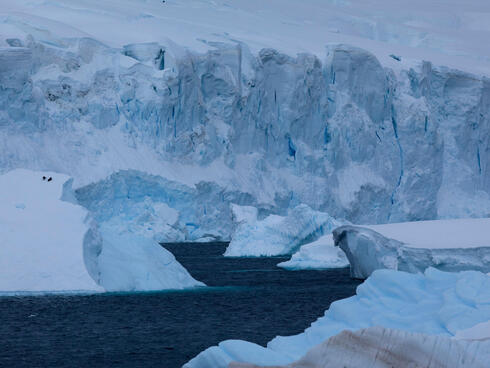By Ghulam Mustafa Jatoi
As we know, climate change is accelerating and the pace will also repeat the poles. An international group of researchers has reconstructed the recent history of ocean warming at the gateway to the Arctic Ocean in an area called the Strait of Fram between Greenland and Svalbard. Using chemical signatures found in marine microorganisms, the researchers found that the Arctic Ocean began to warm rapidly at the beginning of the last century as warm and salty water flowed from the Atlantic in which is called a trend. Atlanticization, and this change was probably preceded by warming. In this article it is being told all about the research on the melting of poles.
Research
An international research team has reconstructed the recent history of ocean warming at the entrance to the Arctic Ocean in the Fram Strait between Greenland and Svalbard. The researchers used chemical signatures found in sea urchins and found that the Arctic Ocean warmed rapidly as warm, salty ocean water flowed out of the Atlantic Ocean at the beginning of the last century. This phenomenon is called Atlantisation. This change is very important. Since 1900, sea temperatures have risen about 2 degrees Celsius while sea ice has decreased and salinity has increased.
The findings, published in the journal Science Advances, provide the first historical perspective on the Atlanticization of the Arctic Ocean and show that the connection with the North Atlantic is stronger than previously thought.
This connection could shape Arctic climate change, and as ice caps continue to melt, this could have a major impact on shrinking sea ice and global sea level rise. Due to climate change, all the world’s oceans are warming, but the Arctic Ocean is the world’s smallest and thinnest ocean, which is warming the fastest.
Atlantis
Thanks to feedback mechanisms, the rate of Arctic warming is twice the global average. Based on satellite measurements, we know that the Arctic Ocean has been steadily warming, especially in the last 20 years, but we want to put the recent warming in a broader context. Atlantization is one cause of Arctic warming, but records from instruments capable of monitoring this process, such as satellites, date back only 40 years. As the Arctic Ocean warms, it will cause ice in the polar regions to melt, which in turn will affect global sea levels.

We know that as the ocean melts, it exposes more of the ocean’s surface to the sun, releasing heat and increasing the temperature of the air. As the Arctic continues to warm, the permafrost will melt. It stores large amounts of methane, a greenhouse gas that is more harmful than carbon dioxide. The researchers used geochemical and environmental data from the ocean floor to reconstruct changes in the properties of seagrasses in the water column over the past 800 years. Hopefully we still have time to stop climate change.
Citation: Timmermans, M. L., Toole, J., & Krishfield, R. (2018). Warming of the interior Arctic Ocean linked to sea ice losses at the basin margins. Science advances, 4(8), eaat6773.
Image Courtesy: Scientist’s Warming, WWF














































